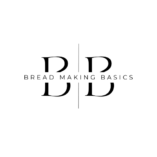Let’s take a moment to chat about the nuance of getting your ratios right when feeding your sourdough starter. Sourdough bread, with its rich, tangy flavor and artisanal allure, owes its existence to a humble yet vital component – the sourdough starter. This living culture of wild yeast and lactobacilli bacteria requires consistent care and feeding to thrive. You will see so many different recommendations on different ratios. How do you know what ratio is right for your bread making journey? Let’s dive into the differences along with innovative products designed to simplify the process.
Understanding the Basics
Before we get into feeding ratios and techniques, let’s revisit the fundamentals. A sourdough starter is essentially a mixture of flour and water inhabited by wild yeast and lactobacilli. These microorganisms metabolize sugars in the flour, producing carbon dioxide gas and lactic acid. The gas makes your bread rise, while the acid provides that distinctive sour flavor. You can read more about all of this as well as how cultivate a starter on a previous post here.
Feeding Ratios: 1:1:1, 1:2:2, and Beyond
Getting your ratios right when feeding your sourdough starter is essential to creating the perfect loaf of sourdough. The ratios contribute to the complexity of flavor as well as the timing of when you are able to start the baking process.
-
- 1:1:1 Ratio: This equal-part feeding ratio involves adding equal weights of starter, flour, and water. (For Example: 50g starter, 50g flour and 50g water). It’s excellent for maintaining a starter without increasing its size significantly. Ideal when you bake frequently.
-
- 1:2:2 Ratio: In this ratio, you add twice the amount of flour and water compared to the starter. It’s often used when you want to build a larger starter for baking. For example, if you have 50g of starter, you’d add 100g of flour and 100g of water. I personally use this method the day before baking!
-
- Beyond 1:2:2: You can adjust the feeding ratios to suit your schedule and baking needs. For example, a 1:3:3 ratio is suitable for a slower, cooler fermentation, which can develop complex flavors. A 1:4:4 ratio creates a larger starter for more substantial batches.
TIP: If your starter is doubling in size then falling far before you’re ready to start baking. Increase your ratio to create a longer fermentation process or feed your starter closer to when you anticipate baking.
Feeding Frequency
-
- Daily Feeding: If you bake every day, maintain your starter with a daily feeding to keep it active and vigorous. Use the 1:1:1 ratio or similar for daily maintenance.
-
- Refrigerator Storage: If you bake less frequently, store your starter in the refrigerator and feed it once a week or every two weeks. Before using it for baking, bring it to room temperature and refresh it with a couple of feedings.
Innovative Products for Sourdough Enthusiasts
This site may contain affiliate links to products. We may receive a commission for purchases made through these links.
-
- Temperature-Controlled Dome: Maintaining a consistent temperature is crucial for sourdough starters, especially during colder months. This temperature-controlled dome, Goldie, provides a stable environment for fermentation, ensuring your starter remains active and ready to use on your timeline. Goldie is bougie, she’s beautiful and she’s a luxury, must-have item for the sourdough fanatic!
-
- Digital Kitchen Scale: Accurate measurements are vital when feeding your starter. Invest in a digital kitchen scale to precisely measure flour, water, and starter. This tool will help you maintain the desired feeding ratios.
-
- Dough Whisk or Spatula: Mixing your starter thoroughly during feedings is essential. A dough whisk or spatula is designed for this purpose, ensuring even distribution of flour and water.
-
- Glass Jars with Markings and Temperature Sensors: Clear glass jars with volume markings and temperature sensors make it easy to track your starter’s growth and ensure the appropriate temperature for the perfect fermentation. They also allow you to observe bubbles and rise, indicators of your starter’s health.
Feeding and maintaining a sourdough starter is both an art and a science. Understanding the different feeding ratios and techniques empowers you to tailor your starter to your baking schedule and preferences. Innovative products like temperature-controlled domes and jars specifically designed for can simplify the process. With dedication and patience, you’ll nurture a thriving starter that yields delicious, homemade sourdough bread for years to come. Happy baking!
